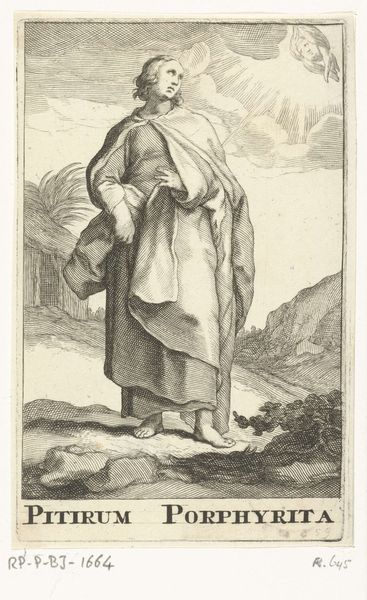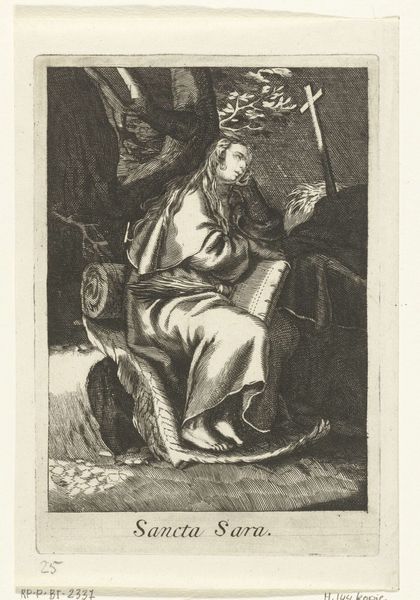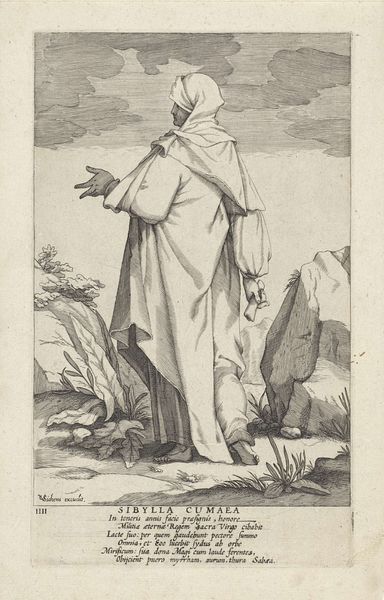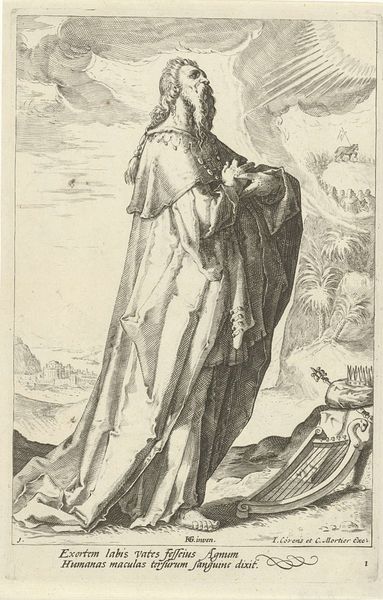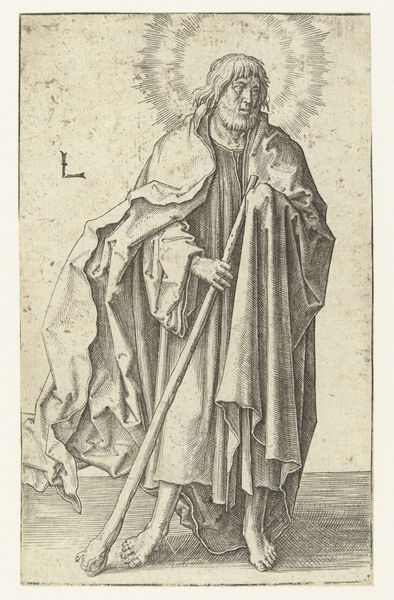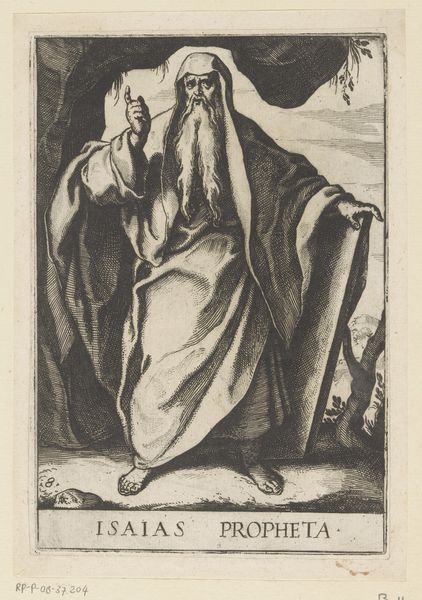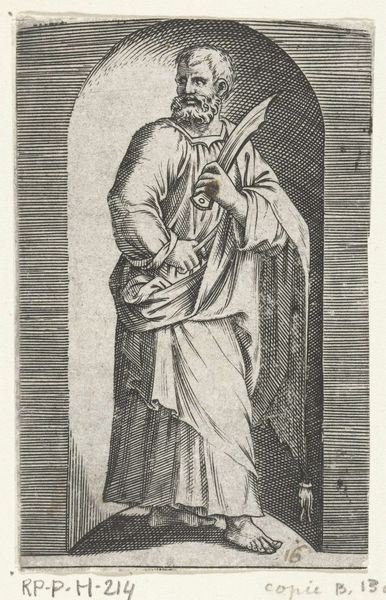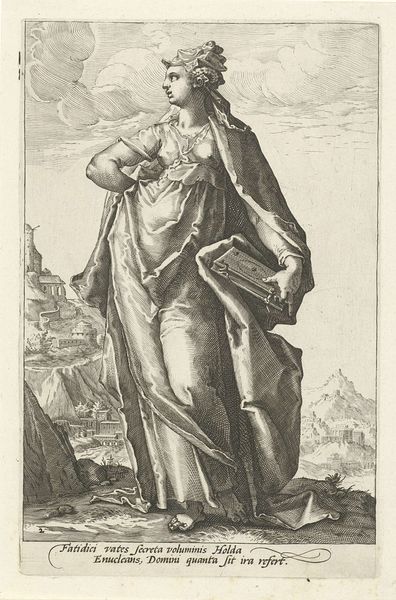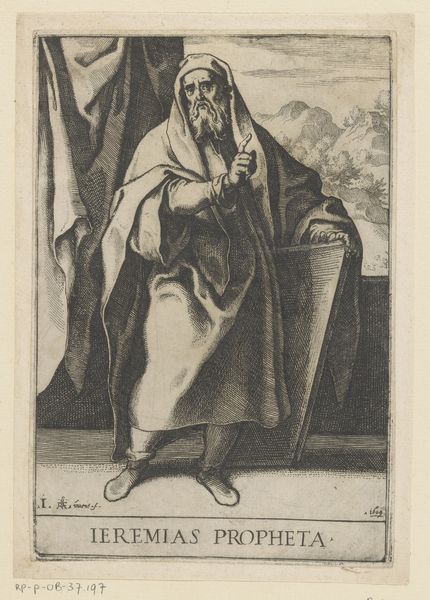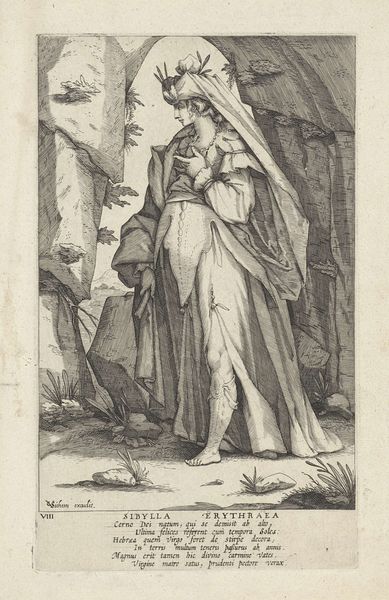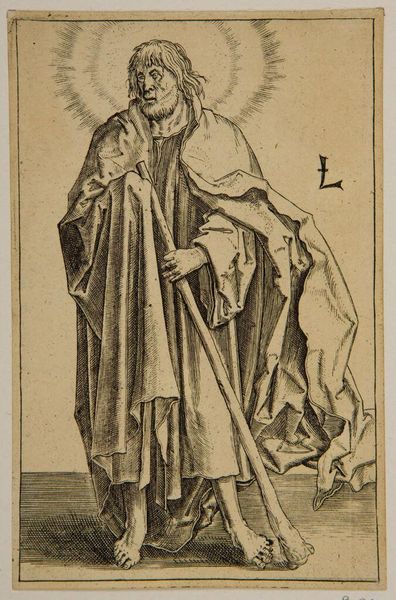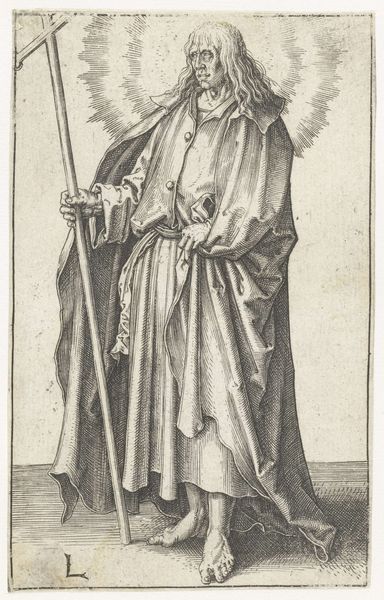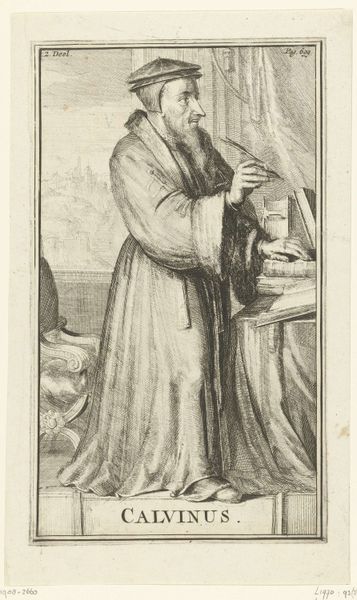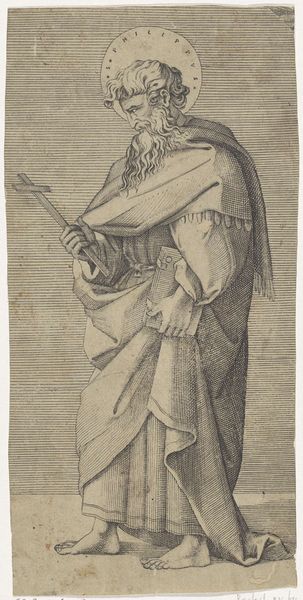
#
light pencil work
#
quirky sketch
#
pencil sketch
#
sketch book
#
personal sketchbook
#
sketchwork
#
sketchbook drawing
#
pencil work
#
storyboard and sketchbook work
#
sketchbook art
Dimensions: height 230 mm, width 139 mm
Copyright: Rijks Museum: Open Domain
Editor: Here we have "Sibille van Samos," an engraving from before 1608 by Christoffel van Sichem I, held at the Rijksmuseum. The intricate lines creating the flowing garments are remarkable, but I am curious about the artist's choices regarding medium. What strikes you most about this piece? Curator: The immediate thing that interests me is the means of production. This is not merely an image; it's an artifact resulting from labor. Consider the physicality of the engraving process – the carving of the image into a block, likely wood in this case given the artist. The material itself imparts texture, which impacts light and shadow, giving shape to our Sibyl. The choice of printing multiplies this design across numerous sheets to facilitate mass consumption by a new bourgeois audience. What does that imply? Editor: That the image has become democratized through print? It is no longer unique. The production changes the value of the work? Curator: Exactly. What once may have existed solely within the sphere of bespoke art has now entered the market. The labor invested and the deliberate decision of printing techniques are central. How does this process inform our reading of the image, considering its departure from more ‘artful’ modes like painting? Do the textures add or subtract from the reading of Sibyl's role in interpreting scripture? Editor: So it's less about the symbolic meaning of the Sibyl herself, and more about how the means of producing the image changed its accessibility and its social function? I hadn't considered the implications of printing the artwork and its availability through the market. Curator: Precisely. Consider the act of consumption itself. A print like this wasn't just viewed; it was owned, collected, perhaps even traded. Its value shifted from purely aesthetic to include a commodity element, deeply entwined with the burgeoning capitalist society of the time. Editor: I will be approaching these types of works very differently going forward. Looking at art this way, by thinking about production, labor, and consumption gives it all new and complex meaning.
Comments
No comments
Be the first to comment and join the conversation on the ultimate creative platform.
